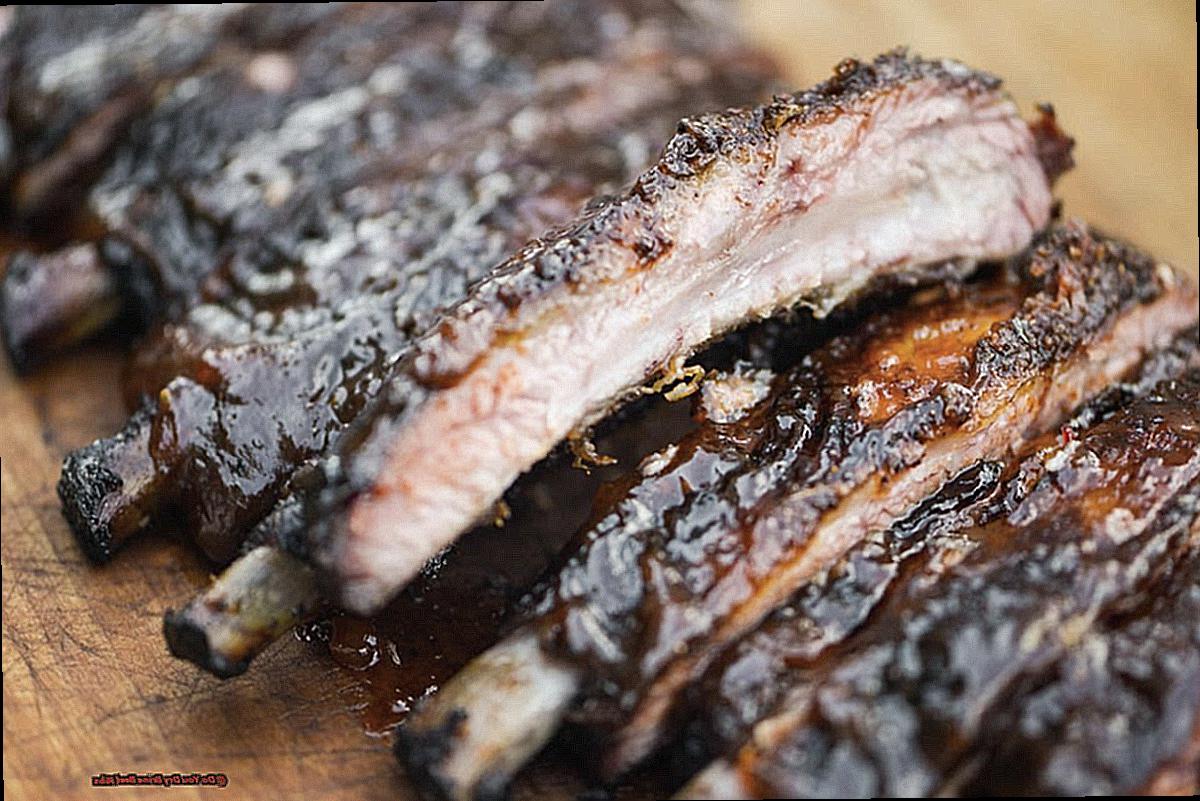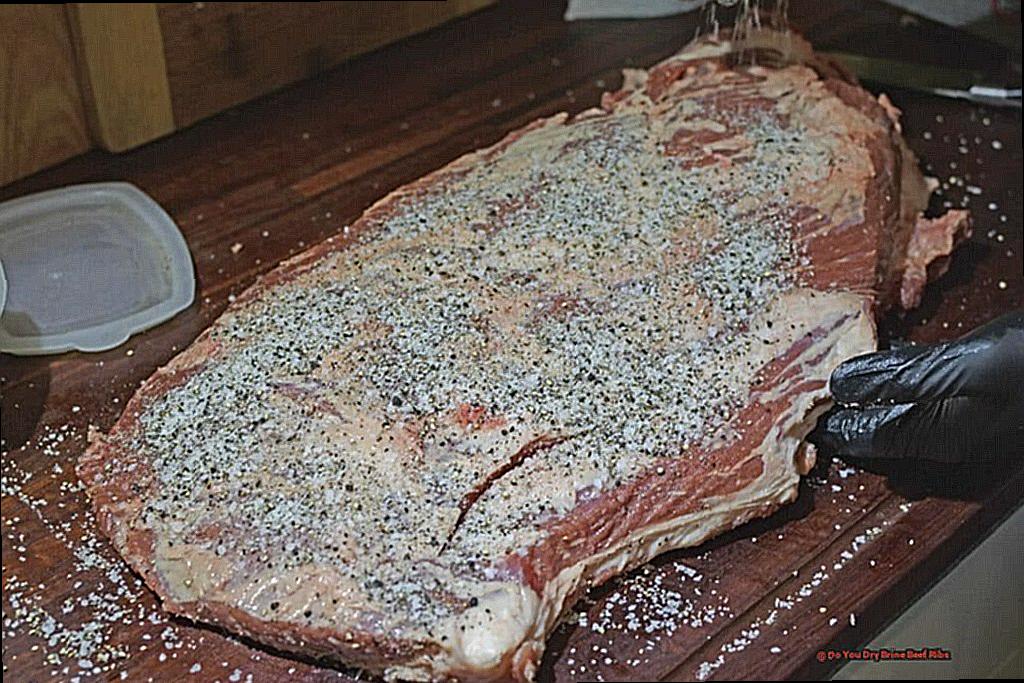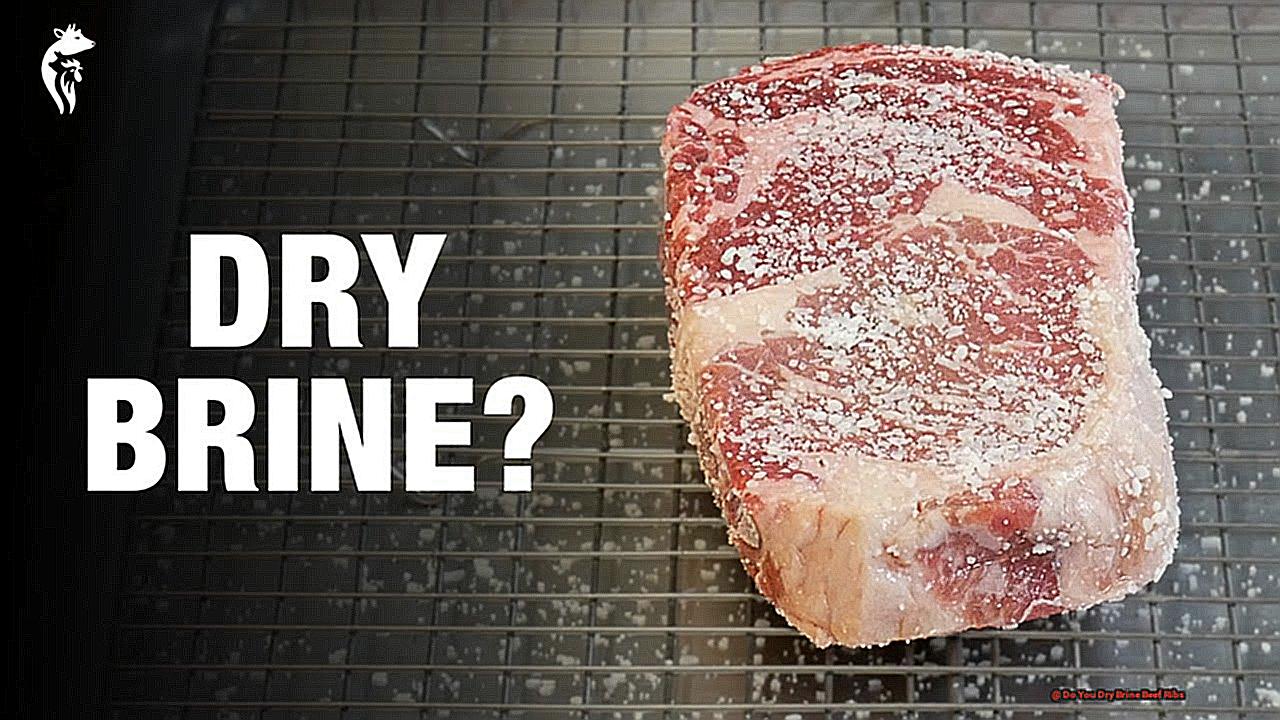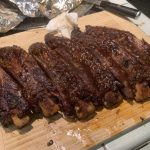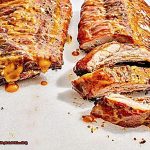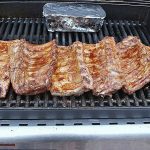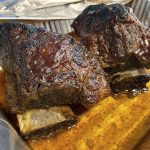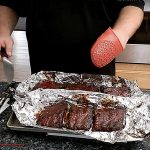Are you tired of lackluster beef ribs that leave your taste buds unimpressed? Say goodbye to dry and flavorless meat and hello to the game-changing technique of dry brining. This simple yet powerful method involves coating the ribs in a blend of salt and spices, then letting them rest in the fridge for several hours before cooking. The result? Juicy, tender, and perfectly seasoned ribs that will have your mouth watering with every bite.
But what sets dry brining apart from traditional marinades? Let’s break it down:
- Unlike marinades, which involve soaking the meat in liquid, dry brining uses only a rub, ensuring the meat retains its natural juices.
- The salt in the rub draws out moisture from the meat, intensifying its flavor and improving its texture.
- With dry brining, you have complete control over the seasoning – no more guessing if you’ve added enough salt or spices.
- This method works wonders for all types of beef ribs – whether you prefer back ribs or short ribs, they will all benefit from a good dry brine.
So, next time you’re planning a BBQ feast, don’t forget to give dry brining a try. Your taste buds (and guests) will thank you for elevating their rib-eating experience to new heights. Trust us, once you go dry brine, there’s no turning back.
Contents
- 1 Do You Dry Brine Beef Ribs?
- 2 Why Dry Brine Beef Ribs?
- 3 The Difference Between Wet and Dry Brining
- 4 Choosing the Right Seasoning Mix for Dry Brining Beef Ribs
- 5 The Importance of Resting Time in Dry Brining
- 6 Cooking Methods for Dry Brined Beef Ribs: Grilling, Smoking, and Baking
- 7 Tips and Tricks for Perfectly Dry Brined Beef Ribs Every Time
- 8 Conclusion
Do You Dry Brine Beef Ribs?
Dry brining, also known as the process of seasoning meat without adding any liquid, involves rubbing the meat with salt and other spices. This technique greatly enhances the flavor and tenderness of beef ribs by allowing the salt to deeply penetrate the meat.
The result is a more concentrated flavor and a crispy exterior when cooked. Moreover, the salt also draws out moisture from the meat, adding to the tenderness and juiciness of the ribs. Another benefit of dry brining is that it evenly seasons the meat, ensuring each bite is bursting with flavor.
To successfully dry brine beef ribs, start by generously rubbing them with a mixture of salt and any desired spices. Make sure to coat both sides of the ribs thoroughly. Then, place them in the refrigerator for at least 4 hours or up to 24 hours before cooking. This will give the salt enough time to fully penetrate the meat and enhance its flavor. When ready to cook, simply remove the ribs from the refrigerator and let them come to room temperature before grilling or smoking.
Not only does dry brining make for delicious beef ribs, but it is also a more convenient method compared to traditional wet brining. With dry brining, there is no need for messy liquids or containers, making clean-up a breeze. Plus, it allows you to customize the seasoning to your liking, giving you full control over the flavor profile of your ribs.
Dry brining is a simple yet effective technique for enhancing the flavor and tenderness of beef ribs. It allows for a more concentrated flavor, crispy exterior, and tender, juicy meat.
Why Dry Brine Beef Ribs?
This method has gained popularity because of the numerous benefits it offers in enhancing the flavor and texture of beef ribs. Some of these benefits include:
- Moisture infusion: Dry brining involves rubbing salt onto raw meat and allowing it to rest in the fridge before cooking. This process draws out moisture from the meat, resulting in a more succulent and tender end product.
- Flavor enhancement: The salt used in dry brining not only adds moisture but also amplifies the natural flavors of the meat. Unlike wet brining, which can dilute the salt and other flavors, dry brining allows for a more concentrated and flavorful outcome.
- Tenderizing effect: The salt in dry brining also acts as a tenderizer, breaking down tough muscle fibers and resulting in a more tender texture.
- Convenience: Dry brining is a much easier and less messy method compared to wet brining, which involves submerging the meat in a liquid solution for an extended time.
- Versatility: Dry brining can be used on any type of meat, making it a versatile option for seasoning poultry, pork, lamb, and beef.
In conclusion, dry brining is an excellent way to add flavor and tenderness to beef ribs without the hassle of traditional wet brining methods. It is also an excellent technique to experiment with different flavors and spices in your BBQ dishes.
The Difference Between Wet and Dry Brining
When it comes to beef ribs, there are noticeable discrepancies between wet and dry brining, such as the application method, required time, and moisture retention levels.
| Application Method | Wet brining entails submerging the meat in a liquid mixture, while dry brining involves sprinkling salt directly onto the meat. | Dry brining is a more straightforward and less messy process, while wet brining can be more time-consuming and requires a container large enough to accommodate both the meat and the brine mixture. |
| Required Time | Wet brining typically takes longer to achieve desired results, ranging from overnight to several days depending on the size of the meat. In contrast, dry brining can be completed in as little as a few hours. | After removing the meat from the brine, it also requires additional time to dry for wet brining, whereas dry brining does not. |
| Moisture Retention | One of the key strengths of wet brining is its ability to retain moisture in meats, resulting in juicier and more tender results. However, this can also lead to a softer texture and diluted flavors. | Dry brining also helps to retain moisture, but it may not penetrate as deeply into the meat. However, it allows for more concentrated and intense flavors due to reduced moisture content. |
Overall, both wet and dry brining offer unique advantages when it comes to beef ribs. Wet brining is ideal for maintaining moisture and evenly seasoning the meat, while dry brining is a simpler process that results in more intense flavors.
Choosing the Right Seasoning Mix for Dry Brining Beef Ribs
When it comes to choosing the right seasoning mix for dry brining beef ribs, there are a few popular options that stand out. Among them are the classic combination of salt, pepper, garlic powder, onion powder, and paprika. These seasonings not only enhance the natural flavors of the beef ribs but also add depth and complexity to the overall flavor profile. The inclusion of salt in the mix helps to tenderize the meat and bring out its natural flavors, while pepper adds a spicy and smoky kick. Garlic and onion powder add a savory and slightly sweet touch, while paprika brings a vibrant color and subtle heat to the ribs. When these seasonings come together, they create a mouth-watering harmony of flavors that elevates the taste of the beef ribs.
But don’t limit yourself to just these seasonings. Be bold and experiment with different combinations to find your perfect mix. For example, try adding some herbs like rosemary or thyme for an aromatic twist, or include some cumin for a hint of earthiness. You can even add some brown sugar for a touch of sweetness or chili flakes for some extra heat. The possibilities are endless when it comes to creating your own unique seasoning blend.
When applying the seasoning mix, make sure to cover all sides of the beef ribs evenly and thoroughly. This will ensure that every bite is bursting with flavor. And don’t be afraid to be generous with the seasoning; remember, you can always adjust to taste later on.
The Importance of Resting Time in Dry Brining
Resting time is a vital step in the dry brining process for beef ribs as it allows the salt to fully penetrate the meat and work its magic. During this period, the moisture in the meat is drawn out and then reabsorbed along with the salt, resulting in a more flavorsome and tender final product.
| Step 1 | Begin by preparing the beef ribs, removing any excess fat and gently patting them dry. | |
| Step 2 | In a small bowl, mix together salt, pepper, garlic and onion powder, and paprika. | This mixture can be adjusted to suit your personal taste preferences. |
| Step 3 | Rub this seasoning blend onto all sides of the beef ribs, ensuring even coverage. | You may also add any additional herbs or spices at this time to further enhance the flavor. |
| Step 4 | Place the seasoned beef ribs on a baking tray and allow them to rest in the refrigerator for at least 4 hours or overnight. | The resting time is essential as it allows the salt to fully permeate the meat and elevate its flavor profile. |
| Step 5 | Once rested, take the beef ribs out of the fridge and let them come to room temperature before cooking. | This will ensure even cooking and prevent the meat from becoming tough. |
| Step 6 | Cook the beef ribs as desired, whether on a grill, smoker, or in the oven. | The end result will be succulent, tender, and flavorsome beef ribs that are sure to impress. |

